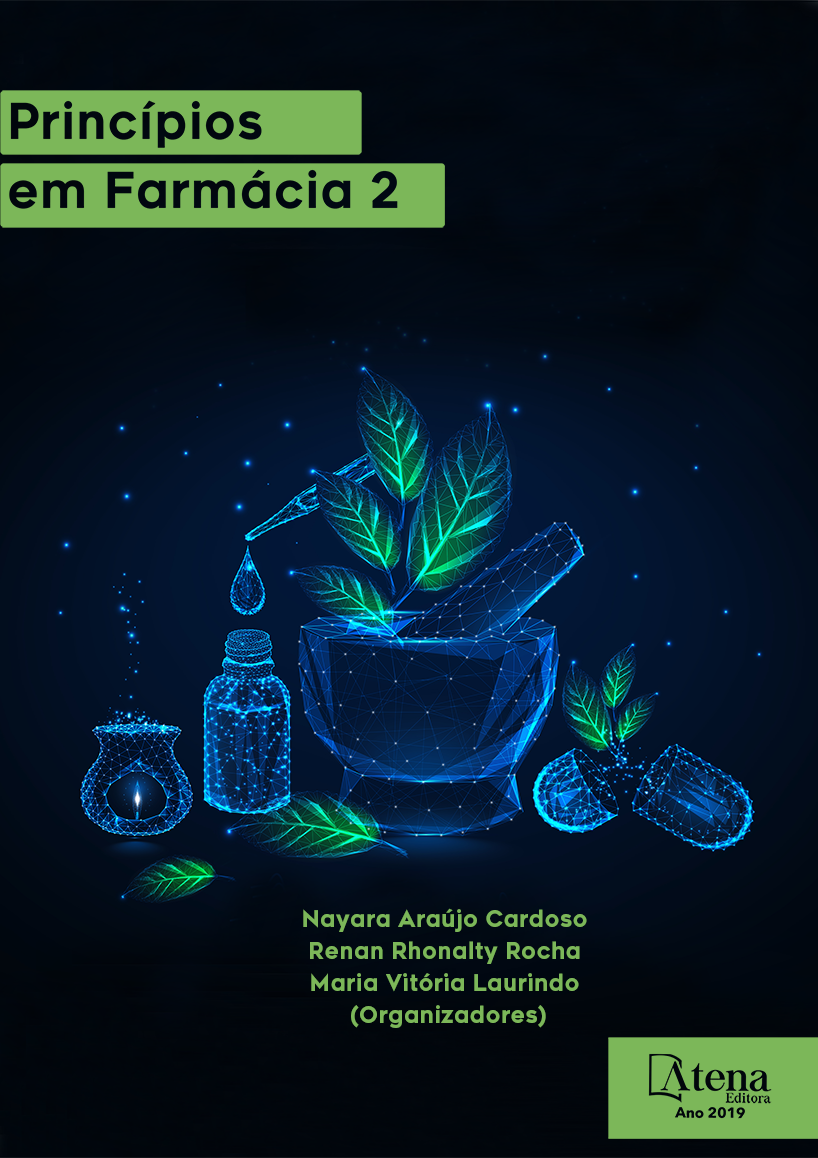
ESTUDO PRELIMINAR DO EFEITO FOTOQUIMIOPROTETOR DE Campomanesia guaviroba FRENTE À RADIAÇÃO UVB
Os raios UV são responsáveis
por lesões cutâneas mediadas pelo estresse
oxidativo, levando ao fotoenvelhecimento e
até ao desenvolvimento de cânceres. Insumos
vegetais antioxidantes vêm sendo estudados
como alternativa para a prevenção/atenuação
dos efeitos deletérios dessa radiação na
pele. Campomanesia guaviroba D.C Kiaersk
(Myrtaceae), espécie nativa ainda pouco
estudada, pertence a gênero com espécies
com potencial antioxidante, podendo ser fonte
promissora de agentes ativos contra a radiação
UVB. O objetivo deste trabalho foi determinar o
teor de fenólicos totais, atividade antioxidante,
citotoxicidade e potencial fotoquimioprotetor
de insumos vegetais obtidos das folhas C.
guaviroba em fibroblastos L929 irradiados com
UVB. O extrato etanólico (EE, 597,7 mg EAG/g)
e a fração acetato de etila (FA, 592,09 mg EAG/g)
apresentaram elevado teor de fenólicos. FA
mostrou maior poder redutor do ferro (1,02 mM
ET/g) e melhor capacidade de sequestro dos
radicais DPPH• (IC50 5,66 μg/mL), ABTS•+ (4,67
mM ET/g de amostra) e O2
•− (IC50 0.04 μg/mL),
demostrando atividade antioxidante comparável
aos antioxidantes BHT e quercetina. O EE (9,05
μg/mL) e FA (5,66 μg/mL) não demonstraram
citotoxicidade em fibroblastos tratados por
24 h. Fibroblastos irradiados com UVB (500
mJ/cm2) foram submetidos aos pré- e póstratamentos
com EE e FA. Os melhores efeitos
fotoquimioprotetores foram observados no prétratamento,
com a FA restaurando a viabilidade
celular em 19,57 % quando comparado ao grupo
controle (células irradiadas e não tratadas). Os
resultados obtidos demonstram que insumos
obtidos de C. guaviroba são promissores para
o desenvolvimento de formulações para o
cuidado da pele.
ESTUDO PRELIMINAR DO EFEITO FOTOQUIMIOPROTETOR DE Campomanesia guaviroba FRENTE À RADIAÇÃO UVB
-
DOI: 10.22533/at.ed.0991902082
-
Palavras-chave: Myrtaceae; atividade antioxidante; fotoquimioproteção; fibroblastos; radiação UVB.
-
Keywords: Myrtaceae; antioxidant activity; photochemioprotection; fibroblasts; UVB radiation.
-
Abstract:
UV rays are responsible for cutaneous lesions mediated by oxidative
stress, leading to photoaging and even the development of cancers. Plant materials
antioxidants have been studied as an alternative for the prevention/mitigation of the
deleterious effects of this radiation on the skin. Campomanesia guaviroba D.C Kiaersk
(Myrtaceae) is a native species still little studied. It belongs to genus with species
with antioxidant potential and can be promising source of active agents against UVB
radiation. The aim of this work was to determine the total phenolic content, antioxidant
activity, cytotoxicity and photochemioprotective potential of plant materials obtained
from C. guaviroba leaves on L929 fibroblasts irradiated with UVB. The ethanol extract
(EE, 597.7 mg GAE/g) and the ethyl acetate fraction (EAF, 592.09 mg GAE/g) showed
a high phenolic content. EAF showed higher ferric reducing power (1.02 mM ET/g)
and better scavenging ability of DPPH• (IC50 5.66 μg/mL), ABTS•+ (4.67 mM ET/g
sample) and O2
•− (IC50 0.04 μg/mL), demonstrating antioxidant capacity comparable
to antioxidants BHT and quercetin. EE (9.05 μg/mL) and EAF (5.66 μg/mL) showed
no cytotoxicity in fibroblasts treated with them for 24 h. Fibroblasts irradiated with
UVB (500 mJ/cm2) were submitted to pre- and post-treatment with EE and EAF. The
best photochemoprotective effect was observed in pre-treatment, with EAF restoring
cell viability by 19.57% compared with the irradiated unprotected cells. The findings
demonstrate that plant materials obtained from C. guaviroba are promising for the
development of formulations for skin care.
-
Número de páginas: 15
- Camila Cristina Iwanaga
- Rúbia Casagrande
- Celso Vataru Nakamura
- Maria da Conceição Torrado Truiti
- Lilian dos Anjos Oliveira Ferreira


